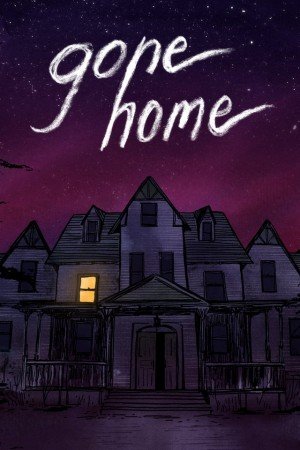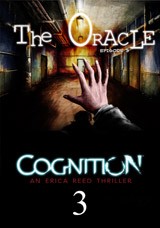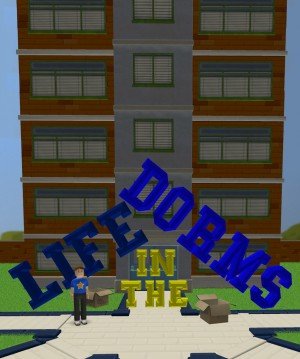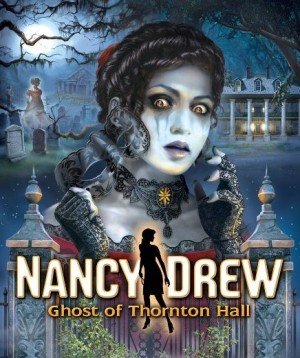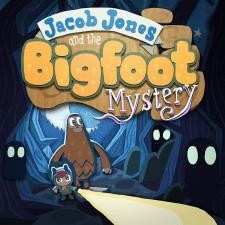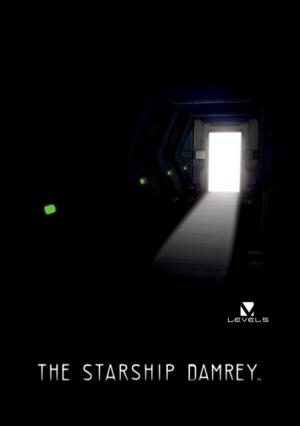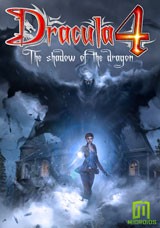Review for Gone Home page t
On May 15, 1995, I learned a life lesson in disappointment. I was a high school junior, skipping an afternoon class to go out for lunch with my best friend. Someone had left behind a Boston Globe on the table and we flipped through it to the entertainment section to read that My So-Called Life—a TV show we loved to the point of obsession—had been cancelled. A few months earlier, when this unflinchingly realistic portrayal of high school life was pulled from primetime after only 19 episodes, we had written letters to the network and circulated a petition around school that picked up a few hundred signatures. (We weren’t that crazy; teens were doing the same all over the country.) But in the end, network executives decided that the American viewing audience just wasn’t that interested in a real, raw look at the secret lives of teenagers.
Gone Home, an indie production from the four-person team at The Fullbright Company, is not a retelling of My So-Called Life, but I have to think the developers were fans. Set in June 1995, Gone Home is a story game that peeks into the interrupted lives of a Portland-area nuclear family, the Greenbriars, who seem to have vanished from their house in a hurry. As you piece together the mystery of their disappearance, the game addresses many of the same real-life issues MSCL so deftly explored: the frustration and isolation of being seventeen, the confusing pangs of first love, and even “grown up” problems like keeping a marriage alive when both parents have drifted apart, all through an LGBT lens that never would have been okay on network television two decades ago. Gone Home tells a story that feels true as you discover it, one that anyone who grew up in the '90s (and, really, anyone who’s ever been a teenager) will relate to in some way.
Without giving away the nuances that make it so compelling and touching, Gone Home’s basic story is this: Katie Greenbriar, a high school graduate who’s just spent a year backpacking in Europe, returns home after midnight to find her family’s house locked up and apparently empty. An ominous note left by her younger sister, Sam, suggests that something bad has happened and implores Katie not to go looking for answers. Upon entering the house, you soon learn that the Greenbriar family moved here the previous autumn, and you'll begin to uncover notes, receipts, newspaper clippings, and other items “just lying around” that fill in the blanks about the ten months they’ve lived here.
In Gone Home, you don’t solve puzzles. There are no action sequences, no dialogues between characters, no use-this-on-that inventory, no cutscenes. This game’s sole pastime is exploration. You start at the threshold of a huge, empty house and by the time you’ve moved through all of its rooms, you’ll understand the lives of the people who lived here, what happened to them, and where they’ve gone. Because Katie embarked on her trip before the move, she’s never been in this house, so she and the player discover each room together for the first time. But because Katie’s a member of this family, she has full permission to go wherever she wants, read notes left behind, and rifle through dresser drawers. It’s a smart setup that resolves the usual adventure game conceit in which players are expected to embrace being a voyeur, a kleptomaniac, and a stranger without a past.
The exploration-only gameplay may sound passive, but it doesn’t feel that way, because you’re the person initiating the search. Gone Home is largely non-linear and you explore the roughly 25-room house at your own pace, deciding which rooms to enter, which lights to turn on, which drawers to open. Much of the story is told through the environment and the objects you discover, with a basic timeline established through the dates on scribbled notes, discarded school papers, and snail mail. Some items you obviously need to find before the story can progress, but there are actually very few of these. Most of what you do is “optional”, meaning you could finish the game without it, but these optional discoveries have a cumulative effect and the designers have done such a good job of making you care about the characters that you’ll want to keep looking. Interestingly, as I got closer to the big reveal at the end, I became even more meticulous and thorough in my exploration. The more I knew, the more I wanted to know.
Katie and Sam are only three years apart in age, and Fullbright has done a convincing job portraying their relationship as sisters and confidantes. Even though Katie’s alone in the house, Sam communicates with her via audio diaries that narrate key events of the past year. These break the fourth wall, with Sam’s disembodied voice triggered by the discovery of certain objects, but the writing is so good and the story so well told that I had no problem suspending disbelief. Anyone distracted by the diaries’ lack of realism in this otherwise true-to-life game can turn them off in a “modifiers” menu available at the start of a new game, but I don’t know why you’d want to. Sam’s audio diaries are the crux of Gone Home’s story, introducing a conscientious teen coping with the turmoil of adolescence in a very real way and presenting a strong bond between sisters, even if we only ever hear one side of it.
Beyond Sam's occasional voiceover, Gone Home is a quiet game with an unobtrusive soundtrack and ambient audio that supports the realism. Your exploration is accompanied by subtle mood music that's often drowned out by the thunder and rain beating outside the house, but this ramps up during the audio diaries to suit the emotions Sam is reliving. Then there’s licensed music that you have access to throughout the game—tracks from real “riot grrrl” bands Heavens to Betsy and Bratmobile, which you can listen to by inserting tapes into cassette players around the house. This is the music Sam listens to: loud and angry, it’s the perfect representation of her pent-up angst. It’s also appropriate to the time period (the riot grrrl movement was central to the Portland music scene in the early '90s) and it has contextual ties back to the plot. You don’t have to hear it at all if you choose not to, but popping in those tapes gives a little more insight into Sam’s life, and it’s this sort of carefully placed detail that makes the game so believable. I did experience a couple of crashes that seemed related to playing these tapes, however, so I urge players to save the game first just in case (a process that, unfortunately, requires quitting to the main menu and reloading).
In addition to the licensed music, you’ll stumble across many other cultural references that set Gone Home in a specific time and place. A magazine cover pays tribute to Kurt Cobain (1967-1994). A brochure for Reed College, a liberal arts university in Portland, can be found in Sam’s room. A highlighted TV listing and movie ticket stub suggest that Sam’s into The X-Files and Pulp Fiction, while a jokey note she passed in class reveals that Beverly Hills, 90210 has already begun its downward spiral. And though My So-Called Life is never explicitly referenced, the posters on Sam’s bedroom walls and the flannels in her dresser would have made Angela Chase feel right at home.
The 3D graphics are more functional than pretty, capably depicting the massive house and its lived-in clutter. With their limited resources, Fullbright has wisely avoided character models that could detract from the game’s realism and instead brings the world to life via pictures, household products, and scraps of paper that boast a great variety of visual styles. Many of these objects can be picked up and rotated to examine even more carefully. Although some mundane items obviously appear in more than one place (e.g. tissue boxes, potato chip bags), the amazing attention to detail in Gone Home’s found items goes a long way to immerse the player in the Greenbriars’ domestic lives.
While Sam’s junior year of high school is at the forefront of the narrative, her parents’ lives have also been in turmoil since their move into the house at 1 Arbor Hill. Mom Janice is a forestry service employee with an hour-long commute whose job increasingly takes her away from her family, while dad Terry, a writer, is floundering on a follow-up to two conspiracy novels he published in the '70s. Wrapped up in their own unhappiness, both appear to be unaware of what’s going on with their youngest daughter—a true-to-life setup that, as any former rebellious teen surely knows, promises dazzling fallout.
The closest you’ll come to solving puzzles is finding three keys and a locker combination needed to progress through the house. (There are also two locked safes that I didn’t find my way into; I’m assuming hints to their combinations exist, but they could have been red herrings.) Once you’ve found the keys you need, you can access new areas of the house that present later parts of the story. With these gateways, the designers have deftly applied structure and pacing to an otherwise non-linear experience: you can only proceed into the basement to uncover the story’s second act after you’ve experienced the full arc of act one, and so on. There's an opportunity at the start of the game to select “unlock all doors,” but again, I don’t know why you would (at least on a first playthrough). Reconciling story structure with player agency is a perpetual challenge in interactive storytelling, and Fullbright has figured out how to do it in a way that makes sense, hiding secrets behind just enough locked doors to be believable in this sprawling house. They’ve also done great job with pacing—no small feat in a game you play at your leisure. I’m usually turned off by games with vast areas to be explored and backstory brain-dumps required to make sense of the world. But by scattering a few clues at a time throughout a familiar setting, Gone Home’s designers kept me on a path while also giving me a ton of freedom. And as the story built to its climax, my own mounting anxiety about what I would discover in the final locked room provided the end-of-game urgency that might otherwise have had to be manufactured with QTEs or cutscenes.
Truly, my only complaint about Gone Home lies with its controls. It’s a first-person, direct control game that you play with a gamepad (left stick to move, right stick to pan the camera), or keyboard and mouse. Like many people who shy away from action games, I’m a klutz with keyboard controls and would have preferred the gamepad, but neither of mine worked quite right. (Fullbright explains that only the Xbox 360 controller is fully supported.) Because the exploration is leisurely and there are no lurking dangers to dodge, being clumsy with the controls won’t prevent you from playing, but I worry that people uncomfortable with the keyboard and mouse setup (or, for that matter, non-gamers who are drawn to Gone Home for its story alone) won’t put up with the learning curve. It took me about 15 minutes to feel like I knew what I was doing, and for the entire game I kept bumping up against little hang-ups like having to repeatedly back up and reposition the camera before I could reach a light switch, or getting stuck against an open cabinet door I meant to go around. I wholeheartedly recommend the game in spite of these annoyances, but controls I didn’t have to keep thinking about would have boosted an amazing experience to a near-perfect one.
About three hours in duration, this is a compact game, but I thought it was a good length for the story being told. The ending had me in tears, which I generally consider a plus in dramatic games—particularly when the story is surprising like it is here rather than falling back on melodramatic clichés. But whether you reach for the Kleenex or not, chances are Gone Home will give you something to think about. For those whose teen years were like Sam’s, her story may dredge up bad memories, but I think the care and sensitivity Fullbright has exercised in telling it will be appreciated. For everyone else, the game provides a chance to experience a perspective we don’t often see, and that’s interactive storytelling at its best. Many people read books for the opportunity to see life through someone else’s eyes, but it’s rare for a game to do it as well as this one does.
Like my beloved My So-Called Life, a “little” show that struggled for ratings and mainstream acceptance, I fear that Gone Home may face an uphill battle when it comes to finding its audience. As an indie adventure, it’s small potatoes compared the team’s previous AAA credits (Fullbright’s founders worked together on the BioShock 2 DLC Minerva’s Den). And in an industry that largely dismisses women’s stories and perspectives, its singular focus on a teenage girl’s high school experience is risky. But that’s part of why I love it. Gone Home excites me not only because it tells a great story, but also because it hints at what more adventure games can achieve. Now that the door has been opened on this sort of narrative experience, I’m optimistic that others like it will follow. Some players want action—there are games out there for you. Others want puzzles, and you have plenty options, too. Me, I crave games that suck me into a story I can care about, introduce me to characters I can empathize with, transport me to a world I don’t want to leave. Gone Home did this, brilliantly.


